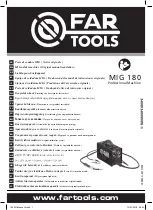
PRECAUZIONI GENERALI
L’operatore ed il manutentore sono tenuti al rispetto delle prescri-
zioni contenute in leggi e norme antinfortunistiche vigenti nel pae-
se in cui è installato il sollevatore.
Devono inoltre:
- operare sempre dalle postazioni di lavoro previste ed indicate nel
manuale;
- non rimuovere nè disattivare i carter e le protezioni meccani-
che,elettriche, o di altra natura;
- prestare attenzione agli avvisi di sicurezza riportati nelle targhette
applicate sulla macchina e nel manuale .
Nel testo del manuale gli avvisi di sicurezza saranno evidenziati
nelle forme seguenti:
PERICOLO: Indica un pericolo imminente che può causare danno
alle persone (gravi lesioni o anche la morte).
ATTENZIONE: Indica situazioni e/o comportamenti rischiosi che
possono causare danni alle persone (lesioni più o meno gravi e/o
anche la morte).
CAUTELA: Indica situazioni e/o comportamenti rischiosi che pos-
sono causare danni di minore gravità alle persone e/o danni al sol-
levatore, al veicolo o ad altre cose.
RISCHIO DI FOLGORAZIONE: è un particolare avviso di sicurez-
za che viene riportato sul sollevatore, tramite targhetta, in alcuni
punti dove è particolarmente elevato il rischio di forti scosse elettri-
che.
RISCHI E PROTEZIONI
Vediamo ora quali rischi possono correre gli operatori o il manuten-
tore in fase di stazionamento del veicolo sulle pedane e quali pro-
tezioni sono state adottate dal costruttore per ridurre al minimo tali
rischi:
SPOSTAMENTI LONGITUDINALI
Gli spostamenti longitudinali sono i movimenti in avanti o all’indie-
tro del carico.
Come protezione sono stati applicati dei fermi basculanti (1), inte-
grati con le pedane che, durante la salita e nello stazionamento,
bloccano il veicolo impedendogli ogni movimento pericoloso.
Fig.17
Spostamento longitudinale e protezione
GENERAL PRECAUTIONS
The operator and the maintenance fitter are required to observe
the prescriptions of safety regulation in force in the country of in-
stallation of the lift.
Furthermore, the operator and maintenance fitter must:
- always work in the stations specified and illustrated in this ma-
nual;
- never remove or deactivate the guards and mechanical, electri-
cal, or other types of safety devices;
- read the safety notices placed on the machine and the safety in-
formation in this manual.
In the manual all safety notices are shown as follows:
DANGER: indicates imminent danger that can result in serious in-
jury to people or death.
WARNING: indicates situations and/or types of manoeuvres that
are unsafe and can cause more or less harmful injuries or death.
CAUTION: indicates situations and/or types of manoeuvres that
are unsafe and can cause minor injury to persons and/or damage
the lift, the vehicle or other property.
RISK OF ELECTRIC SHOCK: a specific safety notice placed on
the lift in areas where the risk of electric shock is particularly high.
RISKS AND PROTECTION DEVICES
We shall now examine the risks that operators or maintenance fit-
ters may be exposed to when the vehicle is standing on the plat-
forms in the raised position, together with the various safety and
protection devices adopted by the manufacturer to reduce all such
hazards to the minimum:
LONGITUDINAL MOVEMENTS
Longitudinal movements refer to forward and backward movement
of the load (vehicle).
To protect against the consequences of longitudinal movement we
have installed pivoting stops (1) at the rear. The stops are integral
with the platforms and serve to secure the vehicle during lifting and
lowering movements and when the vehicle is at a standstill in the
raised position, thus preventing any potentially dangerous move-
ment.
Fig.17
Longitudinal movement and safety systems
17
1
Summary of Contents for 450LT
Page 1: ...I PONTE SOLLEVATORE A 4 COLONNE GB 4 POST LIFT 450LT ATLT...
Page 2: ......
Page 13: ...SCHEMI ELETTRICI ED OLEODINAMICI WIRING DIAGRAMS AND HYDRAULIC 11...
Page 42: ...COLONNE POSTS S ULEN COLONNES COLUMNAS...
Page 43: ...TRAVERSE CROSSBEAMS TRAVERSE TRAVERSES TRAVERSA OS...
Page 44: ...PEDANE PLATFORMS FAHRSCHIENE CHEMINS DE ROULEMENT PLATAFORMAS...
Page 45: ...LIFT TABLE LIFT TABLE...
Page 46: ...CILINDRO CYLINDER ZYLINDER V RIN CILINDRO...
Page 47: ...CILINDRI LIFT TABLE LIFT TABLE CYLINDERS...
















































